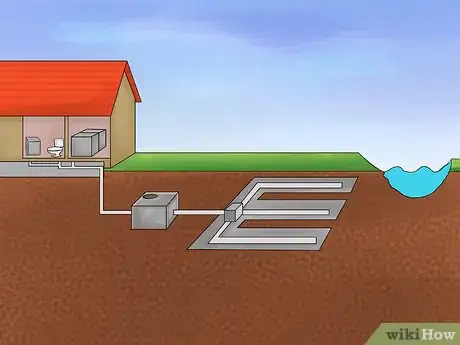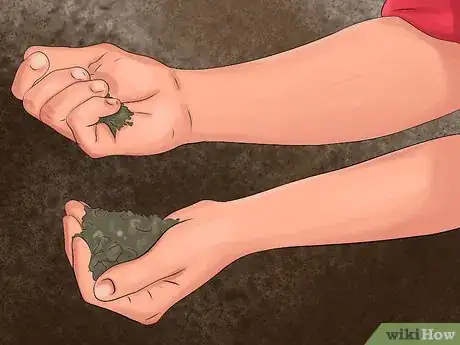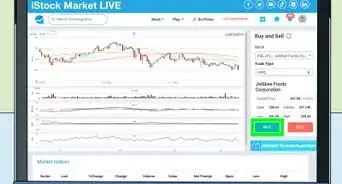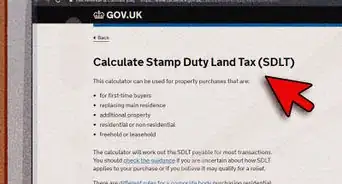X
wikiHow is a “wiki,” similar to Wikipedia, which means that many of our articles are co-written by multiple authors. To create this article, volunteer authors worked to edit and improve it over time.
This article has been viewed 59,523 times.
Learn more...
Many people dream of buying land in the mountains but careful research must be conducted before making a rural land acquisition. Purchasing undeveloped mountain land is often more affordable than buying a property with structures on the premises but factors such as land topography, usage restrictions and distance from civilization can all influence the final cost of a land purchase.
Steps
-
1Consider how close you want to live to civilization. Ask yourself how far you want to travel for basic services and shopping and how you will get there if your car is inoperable. Visit the town closest to your desired area to see if the shops and services will accommodate your basic needs.[1]
-
2Locate a reputable real estate agent who specializes in rural property. An agent who only sells residential properties in established communities may not have enough familiarity with a mountain area's regulations about septic systems, water wells and road infrastructure.
- Choose an agent based on good customer feedback from friends and family.
Advertisement -
3Decide how you will use the land. When you are trying to buy land in the mountains, research local restrictions that determine how the land can be utilized. Many homeowners associations (HOA) require property owners to commit to building a structure on the property. Others dictate what types of vehicles can be parked on the property and prohibit agricultural use.[2]
-
4Determine if a septic system and well must be installed. These improvements can substantially increase the cost of your purchase. Drilling for water can be expensive if a property is far from a reliable water source. When a large amount of earth and rock needs to be excavated for a new septic system, construction costs will also rise.[3]
-
5Examine the topography of the land. Check for soil suitability, the sunniest and darkest areas, whether or not it is located on a floodplain and if the land has year-round access.[4]
- If you want to install a solar system, a piece of land in the forest may not receive enough sunlight.
- Land located close to rivers may flood during excessively rainy years while land located in drought-prone regions may require you to store water in cisterns during the driest years.
-
6Review the land ordinances, zoning and mineral rights rules. Many mountain properties are located in areas that restrict how the property is used, what can be built on the land and whether or not individuals or state governments can own the rights to minerals located underneath the soil. In some western states, water is owned by the state and restricted to domestic, in-house use only.[5]
-
7Save as much cash as you can for your ideal mountain property. A majority of land is purchased with cash.[6]
- Approach a local bank first if you need financing. Local banks with an intimate knowledge about the area may be more willing to lend than national institutions that are unfamiliar with local trends in the marketplace.
- Consider building a primary residence or rental property on the land. Banks are often more willing to lend money for raw land if collateral exists on the property.
-
8Rate the accessibility of your potential mountain property purchase. If you will need fast, easy access to your property during all four seasons, look for properties with well-graded driveways and maintained roadways.
- Learn who is responsible for maintaining roads leading to your property. Homeowner association dues often pay for local road maintenance. Sometimes property owners must collaborate to pay for maintenance.
- Verify that you have year-round, permanent access to roads leading to your property. If you can only get to your property on privately-owned roads, verify that your purchase includes permanent use of those roads.
-
9Calculate the costs of owning mountain land in cold-weather regions. You may need to purchase a snowplow, snow and mud tires or a heavy-duty vehicle to access your mountain land during inclement weather.
-
10Research the resale value of the property. Look for a steady rise of property values in the area where you want to buy. Slow, upward growth often indicates that land will be more valuable in the future.
Advertisement
Community Q&A
-
QuestionHow much does a non-working well devalue a mountain property?
 Upnorth HereTop AnswererMany mountain properties have no well at all. Anyone appraising the property would naturally consider the functionality of the well, the feasibility of repairs or a different well as part of the final number. It would then be up to the buyers (or lenders) to determine whether they want to undertake such a risk, knowing that a working well would have made the property more expensive.
Upnorth HereTop AnswererMany mountain properties have no well at all. Anyone appraising the property would naturally consider the functionality of the well, the feasibility of repairs or a different well as part of the final number. It would then be up to the buyers (or lenders) to determine whether they want to undertake such a risk, knowing that a working well would have made the property more expensive.
Advertisement
Things You'll Need
- Real estate agent referrals
- Local land use ordinances and restrictions
- Cash
References
- ↑ https://www.agric.wa.gov.au/small-landholders-western-australia/tips-purchasing-small-rural-landholdings
- ↑ https://www.fairtrading.nsw.gov.au/housing-and-property/buying-and-selling-property/buying-a-property/buying-rural-land
- ↑ https://www.agric.wa.gov.au/small-landholders-western-australia/tips-purchasing-small-rural-landholdings?page=0%2C1
- ↑ https://www.fairtrading.nsw.gov.au/housing-and-property/buying-and-selling-property/buying-a-property/buying-rural-land
- ↑ https://www.consumer.vic.gov.au/duediligencechecklist
- ↑ https://www.businessinsider.com/how-to-invest-in-real-estate-make-money
- http://homeguides.sfgate.com/tips-buying-rural-property-8757.html
About This Article
Advertisement




































































